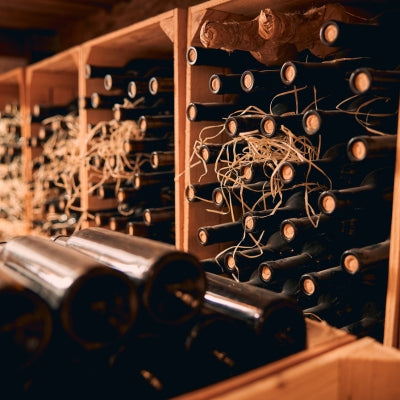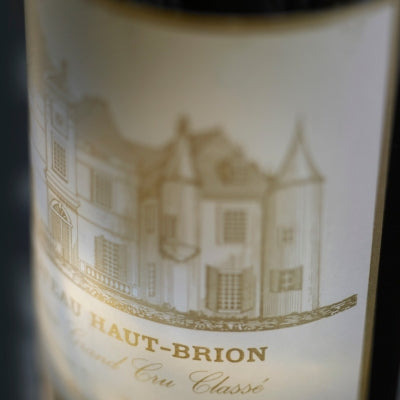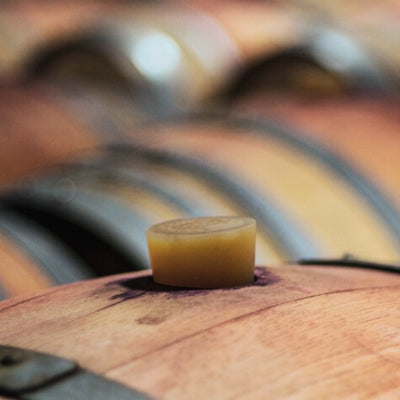
Collector’s corner: buying the dip
The current market’s downturn has resulted in lower prices and more readily available wines, making it the perfect time to restock your cellar.
What’s the dip?
At the end of 2022, fine wine prices began to fall. This dip created the so-called ‘buyer’s market’ for fine wine, with customers enjoying discounted prices and more readily available stock. Another benefit has been that older and rarer vintages re-entered the market, as the number of offers increased.
On the secondary market, trade value fell (due to lower prices) but trade volumes remained steady, suggesting sustained interest in fine wine.
During the dip, some buyers have increased their collections in anticipation of prices recovering. Indeed, while the uncertainty marking the broader economic landscape has impacted the market, there have been upticks implying that fine wine is looking for a turning point.
Where have prices fallen the most?
In the last year, fine wine prices have fallen about 14%. However, not all regions have been affected equally.
During the pandemic, Burgundy and Champagne skyrocketed, but in the past year, they have been the hardest hit. Burgundy prices dipped 18.5% on average, while Champagne dipped 16.3%. Domestic wines have also experienced price declines, averaging 7.8%.
According to Wine-Searcher, the average price of Dom Pérignon 2004 has fallen 9% in the last year, all while availability has increased and the wine’s search rank has improved, suggesting that buyers are taking advantage of these newly created pockets of opportunity.
Other highly sought-after wines that are also rarer have seen even bigger price drops. The average price of Pétrus, the sixth most-searched-for wine, is down 10.9% in the last twelve months. Domaine de la Romanée-Conti’s Romanée-Conti Grand Cru (number nine in the Wine-Searcher rankings) has tumbled 13.3%.
What wines are worth buying?
When buying wine during a market dip, it is crucial to clarify your goals – are you purchasing for immediate enjoyment, or are you looking to cellar and potentially resell your wine over the longer term? Your objectives will greatly influence the types of wines you should focus on.
If your goal is to stock your cellar with wines for future consumption, the current market downturn offers a golden opportunity. In this case, you might prioritize wines ready to drink now or within the next few years. Regions that have seen significant price drops, such as Burgundy or Champagne, might be particularly appealing.
On the other hand, if you are looking at wine for its potential future value appreciation, your strategy should be more selective. Wines from regions with a history of strong price rebounds and a more resilient market performance, such as Bordeaux or the Super Tuscans, could offer better long-term value.
As observed in our last Collector’s Corner, classics never go out of style. During the current market’s downturn, risk-averse buyers have largely focused on stable, consistently excellent wines with proven collectible potential such as Bordeaux’s classed growths, particularly older vintages. Ready-to-drink wines have generally held their value and often present a more attractive alternative to the latest releases such as with the 2023 Bordeaux futures campaign.
When will the market turn?
No market falls or rises forever. Historically, the fine wine market has shown resilience, often rebounding strongly after periods of decline. For instance, after the global financial crisis of 2008, wine prices dropped significantly, but by 2010, the market had not only recovered but surged to new heights, driven by increased demand from emerging markets like China.
Several factors typically influence these recoveries. Economic stabilization is a key driver, as it restores consumer confidence and spending power. Additionally, the finite nature of fine wine – particularly older vintages – means that scarcity can drive up prices as demand returns.
Looking at these patterns, the current dip may present a similar buying opportunity. While there is no guarantee that prices will follow the same trajectory, the underlying factors – limited supply, sustained interest from collectors, and eventual economic recovery – suggest that the market could see a similar recovery in the future. For long-term collectors, understanding these historical trends can offer valuable insight into the potential for future gains.
By learning from past market behavior, collectors can better navigate the current dip, identifying opportunities that align with both their short-term goals and long-term potential.
Want to read more? Take a look at some of our other blogs here:



